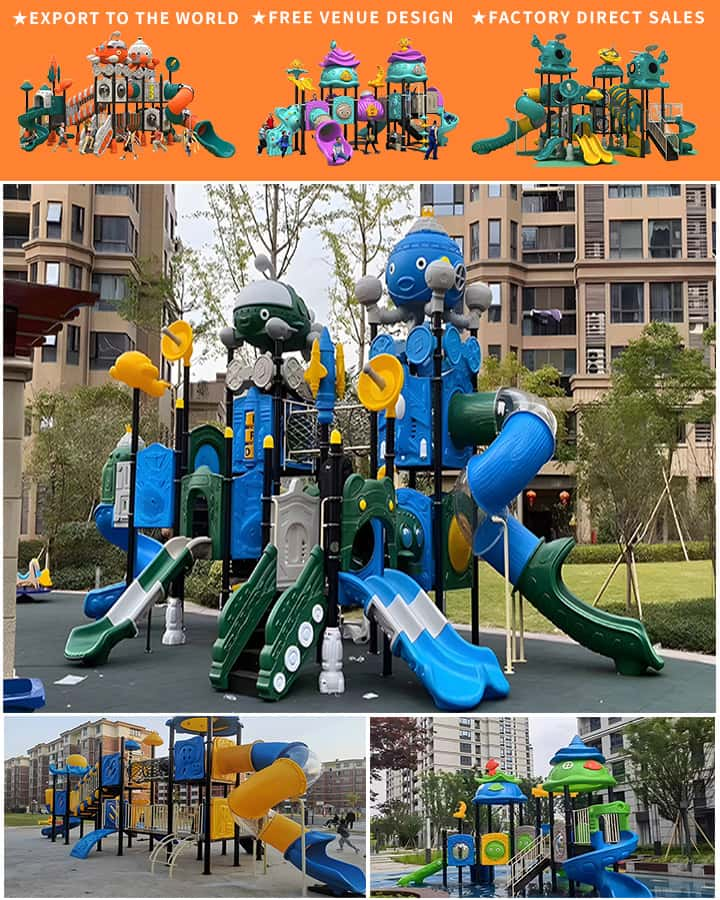Outdoor playgrounds are vital spaces where children can engage in physical activities, social interactions, and imaginative play. One of the most critical aspects to consider when designing or updating a playground is the choice of flooring material. The right material can significantly impact safety, durability, and overall user experience. Here’s an overview of some popular outdoor playground flooring materials and their characteristics to help you make an informed decision.
1. Poured Rubber
Poured rubber flooring has become increasingly popular due to its excellent safety features. Made from recycled tires, this resilient surface provides superior impact absorption, reducing the risk of injuries from falls. It also offers good traction, which is essential for active play areas. Poured rubber is available in various colors, allowing for creative designs that can incorporate educational elements or game lines. Although initially more expensive than some other options, its longevity and low maintenance requirements make it a cost-effective choice in the long run.
2. Rubber Tiles
Rubber tiles are another excellent option for playground surfaces. They are pre-formed and can be easily installed over existing surfaces, making them a versatile solution for both new constructions and renovations. These tiles provide good cushioning and shock absorption, similar to poured rubber but at a lower cost. However, they may not offer the same level of durability and can shift over time, requiring occasional realignment.

3. Synthetic Grass
Synthetic grass has gained popularity for its aesthetic appeal and low maintenance needs. Unlike natural grass, synthetic turf does not require watering, mowing, or fertilizing, making it environmentally friendly and easy to maintain. It provides a soft landing surface, although it may not offer as much shock absorption as rubber-based materials. Additionally, high-quality synthetic grass can withstand heavy use and extreme weather conditions, ensuring a long-lasting playground surface.
4. Mulch
Wood mulch is one of the most traditional playground surfaces and is often used in home backyard setups. It is affordable, readily available, and provides a natural appearance. Mulch offers decent cushioning and can be replaced periodically to maintain its effectiveness and hygiene. However, it requires regular upkeep to prevent compaction and the growth of mold or mildew. Wood mulch can also pose splinter risks and may not meet safety standards for public playgrounds unless properly maintained.
5. Sand
Sand is commonly used in beachside or sandbox areas within playgrounds. It provides a soft surface that is gentle on falls but lacks the necessary shock absorption for high-energy play areas. Sand can be challenging to keep clean and free from debris and contaminants. Moreover, it may not comply with safety regulations for larger playground installations due to its limited cushioning capabilities.
6. Wet Pour Surfacing
Wet pour surfacing is similar to poured rubber but includes the addition of color flakes during application, creating a textured surface that enhances slip resistance. This type of flooring is highly durable and offers excellent impact absorption and safety. Its vibrant colors and customizable designs make wet pour surfacing an attractive option for modern playgrounds. While it tends to be more costly, its long lifespan and safety benefits justify the investment.
Conclusion
Selecting the ideal outdoor playground flooring material depends on various factors, including budget, location, intended use, and safety requirements. Each material has its unique advantages and potential drawbacks. By evaluating these options carefully and considering the specific needs of your playground, you can choose a flooring solution that ensures a safe, durable, and enjoyable play environment for children. Investing in quality playground flooring not only protects young users but also enhances the overall recreational experience.




